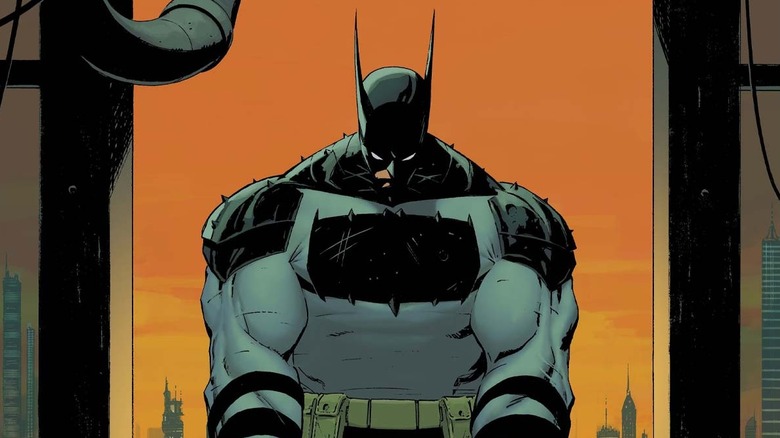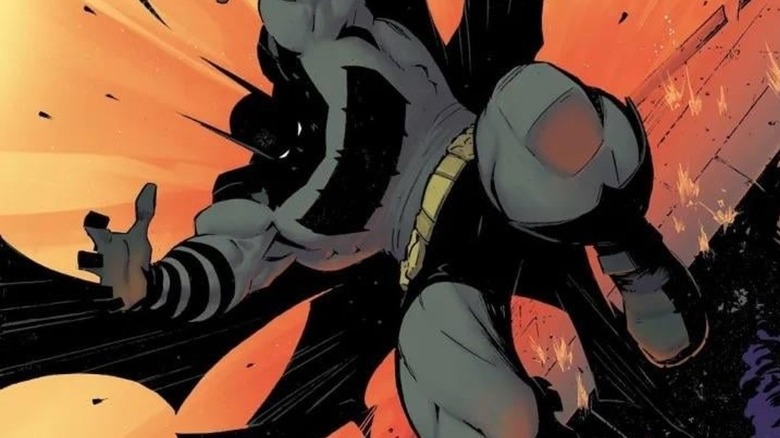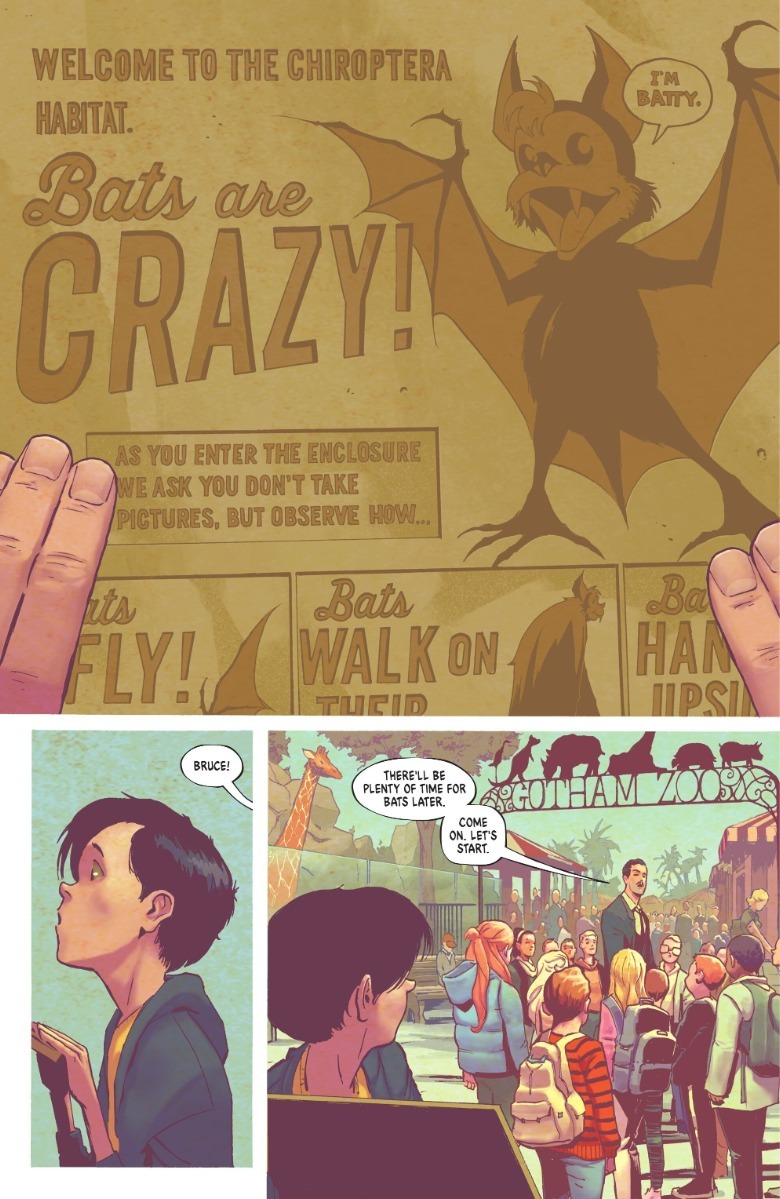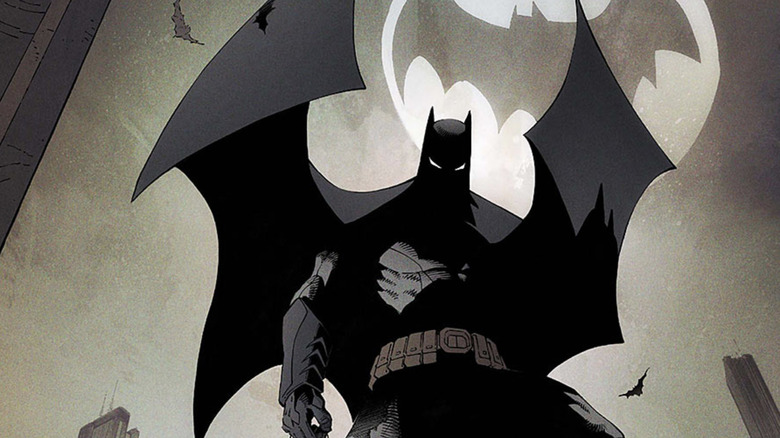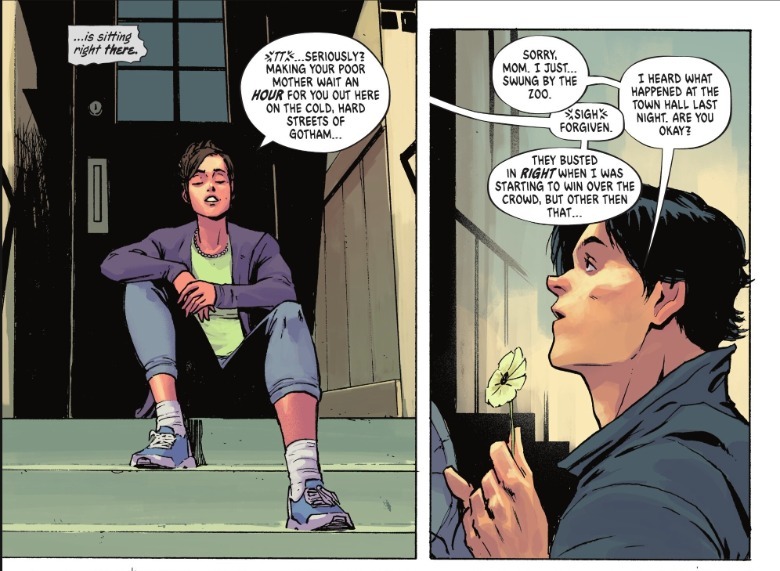DC's New Batman Comic Just Changed Bruce Wayne's Origin Story In A Major Way
This article contains spoilers for "Absolute Batman" issue #1.
Whenever there's a new Batman movie, the jokes fly about how we all will again have to watch Bruce Wayne's parents be murdered, gunned down in an alleyway before their young sons' eyes, setting him on the path to (dark) knighthood. We get it, everyone thinks, wary of being hit over the head with the same beats.
It's unavoidable, though. Of all tragic origin stories in superhero comics, Batman's is the one that most defines his character. It's the root of both his rage and his compassion. Touching on Batman's parents in film after film, comic after comic can be tiresome, but if a story avoids it, is it truly a Batman story?
Late voice actor Kevin Conroy was the greatest Batman of them all. His crowning performance is in "Batman: Mask of the Phantasm" when Bruce stands before his parents' graves, asking their forgiveness for wanting to be happy even if he can't fulfill his promise to them.
Acclaimed Batman writer Grant Morrison, who wrote Bruce Wayne's comic adventures for seven years, has been praised for reinventing and innovating the Caped Crusader's mythos (particularly for introducing Bruce's son Damian Wayne as a new Robin). For all that change, though, Morrison still said, "I chose to build my story around the basic trauma, the murder of his parents, that lies at the heart of Batman's genesis." "The hole in things" is the refrain of Morrison's Batman, and for Bruce Wayne, that hole is his parents' eternal absence.
This brings us to the freshly-debuted "Absolute Batman" #1 (written by Scott Snyder, drawn by Nick Dragotta). The series is part of DC's "Absolute Universe" reboot; akin to Marvel's "Ultimate" comics, the setting twists DC's famous characters.
Despite his familiar-looking costume, Absolute Batman is not the Bruce Wayne you know. One big difference? His mother, Martha Wayne, is still alive and it looks like she'll be a major supporting character in this series. This change ties together nicely with the rest of Snyder and Dragotta's Batman overhaul.
Absolute Batman is a new beginning for DC Comics
Some context for "Absolute DC" is necessary. Snyder isn't just writing "Absolute Batman," he's one of this initiative's architects. The big idea behind the project is flipping the familiar superheroes of DC on their head. "DC All-In Special" #1 (by Snyder and Joshua Williamson), which depicts how the "Absolute" universe came to be, literally has its back half pages printed upside down.
So in this "Absolute" world created by the God of Evil, Darkseid, Superman is an orphan on both Earth and Krypton, Wonder Woman was raised in Hell instead of Paradise, and Batman belongs to the working class; he fights outside the system instead of sitting atop it. Not to fret, though, you can read "Absolute Batman" without this context if you choose.
"Absolute Batman" #1 opens on the day that Bruce became Batman. He's not walking out of a movie theater, instead, he's on a school field trip to the Gotham City Zoo. The young Bruce is looking, where else, at the bat exhibit.
This Thomas Wayne is a teacher, not a billionaire industrialist/surgeon. While his class is on the trip, a gunman enters the zoo and starts firing. Thomas is shot after getting Bruce and his classmates to safety. Since Martha Wayne isn't there, she's spared her husband's fate. (The shooter is not named or clearly seen in this first issue — will it be Joe Chill, the usual killer of Bruce Wayne's parents, or someone else?)
So yes, Absolute Batman's origin is centered not on a mugging, but a mass shooting event. This sort of topical writing is typical of Snyder. ("I always love anvil-to-the-head symbolism," he's said before.) In a blurb for his and Greg Capullo's "Batman: Last Knight on Earth," he writes about the alarm he felt about his own son having to do active shooter drills at school.
As you'd expect from a teacher's salary, this Bruce Wayne didn't inherit a multi-billion fortune from his father. He's got a day job as a Gotham City engineer, Martha appears to live in a modest apartment complex, and as Batman, Bruce's secret base is on the top floor of an empty office building, not in a Batcave.
Speaking to Polygon about "Absolute Batman," Snyder said that Batman's strength as a character is how he inspires people, both the ones in the stories and those reading them, to overcome fear and be better. So, he wanted this Batman to be one that readers would have more common ground with: "Well, the first thing would be to strip away some of the resources, some of the privilege, some of the things that make [Batman] so much a part of the system."
It remains to be seen if that'll head off the exhausting discourse about all the "better" ways Bruce Wayne could solve crime than by being Batman.
How does Absolute Batman compare to Scott Snyder's past Batman comics?
"Absolute Batman" featuring a still-living Martha Wayne invites an unavoidable comparison to Jonathan Hickman's ongoing "Ultimate Spider-Man." In that series, Peter Parker's Aunt May is dead, but his Uncle Ben is still alive. To keep him relevant, Hickman reinvented "Ultimate" Uncle Ben as a journalist (hence Peter becoming a news photographer) and close friends with J. Jonah Jameson.
Coincidentally or not, Snyder and Dragotta's "Absolute" revisions to Batman make him more like Spider-Man, the definitive working-class superhero. Spider-Man keeps his identity secret to protect his loved ones, whereas Batman's closest friends are usually his crime-fighting partners like Alfred or Robin. This Bruce Wayne, though, will have to keep his mom in the dark about his nightlife. Martha's first appearance in "Absolute Batman" #1, berating her son for tardiness and being blissfully unaware of his Batman escapades, is an archetypal Peter/Aunt May scene.
Frankly, Martha Wayne is an underexplored detail of "Batman." Bruce's memories of and longing for his parents typically give greater weight to his father (see "Batman Begins"), while his mother feels like an accessory. Keeping Martha around could have huge implications not just for the foundations of "Absolute Batman," but in how the book can fill in the empty lines of her character.
Despite all the rearranging "Absolute Batman" has already done, some familiar Batman tenets remain; Snyder is an experienced Batman writer. He wrote the main "Batman" title from 2011 to 2016 and some of his stories from that run, especially "The Court of Owls" and "Zero Year," rank among the best modern Batman comics. Someone who knows and loves something is often the best person to take apart and rebuild it, after all.
In Snyder's Batman stories, Batman often speaks of Gotham City as a living being; its architecture is its flesh, its stone foundations its skeletons. The titular villains in "The Court of Owls" were a symbolic personification of Gotham's will, out to teach Batman that he hadn't tamed it. That's why "Absolute" Bruce's job as a city engineer is a pointed choice; he tends to and reshapes Gotham's physical infrastructure by day, while at night he battles the evil dwelling in its soul.
"Absolute Batman" #1 is available from print and digital retailers.
